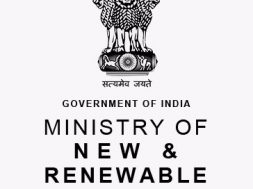
India to soon decide on non-tariff barriers on solar cell imports to boost local production: Minister Joshi – EQ
In Short : India is considering implementing non-tariff barriers on solar cell imports, a move aimed at reducing reliance on Chinese imports and encouraging domestic production. This includes extending the Approved List of Models and Manufacturers (ALMM), which currently applies to solar modules, to solar cells as well. The government hopes to boost local capacity and ensure quality control as it works toward its goal of 500 GW of non-fossil energy capacity by 2030.
In Detail : The Centre is considering extending the Approved List of Models and Manufacturers (ALMM) to solar cells, reducing Chinese imports and boosting local manufacturing.
India’s 500 GW renewable energy goal by 2030 requires scaling up domestic solar cell capacity beyond the current 6 GW.
The Indian government is will soon decide on imposing non-tariff barriers on solar cell imports by including them in the Approved List of Models and Manufacturers (ALMM), a move that could reshape the sector by curbing Chinese imports and promoting domestic production.
Speaking to reporters, Pralhad Joshi, Union minister for new and renewable energy, on Wednesday said that the ministry is actively considering the proposal.
The ALMM is a government-endorsed list of solar module models and manufacturers that are eligible to supply to state-backed projects. In April, Mint reported that after applying the ALMM to solar modules earlier this year, the Centre is now mulling similar measures for solar cells to support Indian-made alternatives.
When asked about extending the ALMM to solar cells, the minister said, “That is in the pipeline and thinking is on, and very shortly we will take a considered decision.”
The move is aimed at reducing reliance on Chinese imports, which dominate the global solar market, and strengthen India’s domestic solar equipment industry.
The ALMM, introduced in 2021, had been suspended until FY24 due to low module supplies and concerns over its potential to slow down solar capacity additions. However, the list was reinstated this April. Currently, only India-made modules and those manufactured domestically are eligible under the ALMM, which has an approved solar module capacity of around 54 GW.
Key measures taken over recent years to bolster domestic production include a high import duty on solar modules and cells, the ALMM, and production-linked incentive (PLI) schemes designed to boost the solar module ecosystem.
As India aims to achieve 500 GW of non-fossil energy capacity by 2030—of which 292 GW is expected to come from solar power—the country will need an annual cell and module manufacturing capacity of 25-50 GW. Presently, India’s solar cell manufacturing capacity stands at just over 6 GW.
“Our installed renewable energy capacity has increased from 75.52 GW in March 2014 go 203 GW now. That is a 165% increase in 10 years. India’s progress serves as a model for other countries seeking to transition to a low-carbon economy,” Joshi said on Wednesday at an industry event.
The minister emphasized the government’s commitment to expanding renewable energy deployment, enhancing energy efficiency, and driving innovation across the energy value chain. He also invited global investors and companies in the renewable energy and green hydrogen sectors to explore opportunities in India’s “evolving energy landscape.”
These efforts align with India’s broader goal of achieving 500 GW of installed non-fossil power generation capacity by 2030 and reaching net-zero carbon emissions by 2070.












